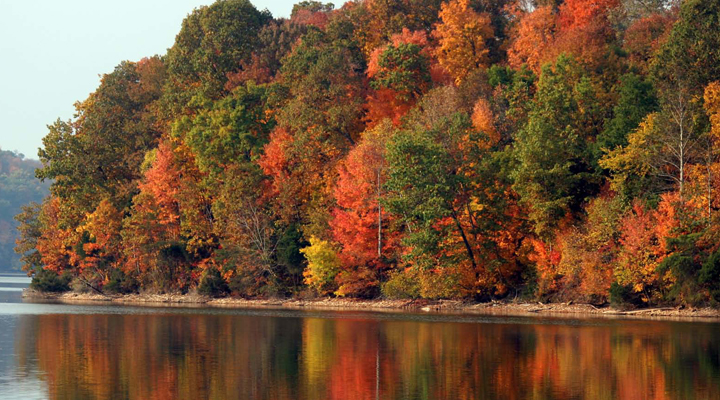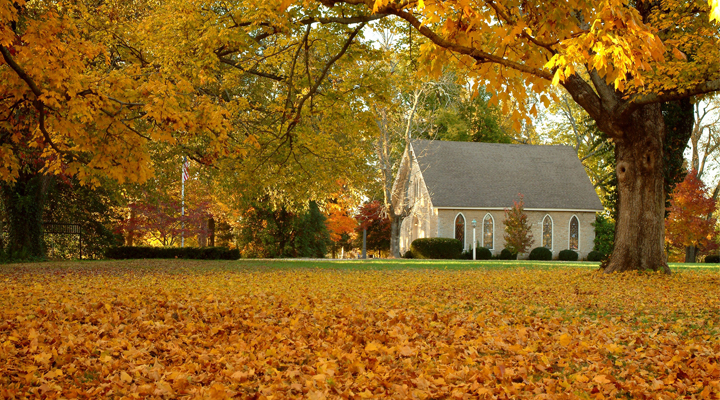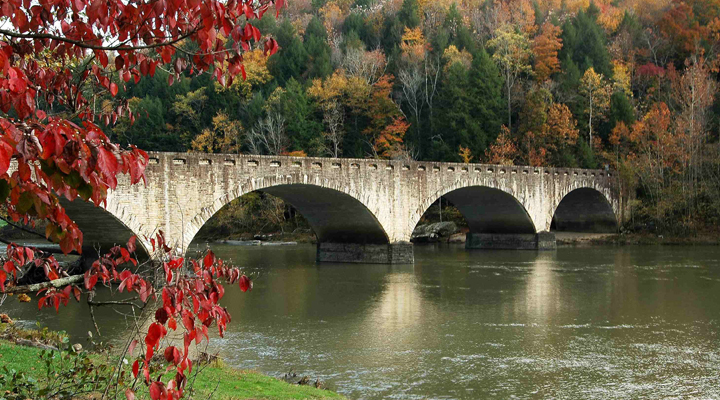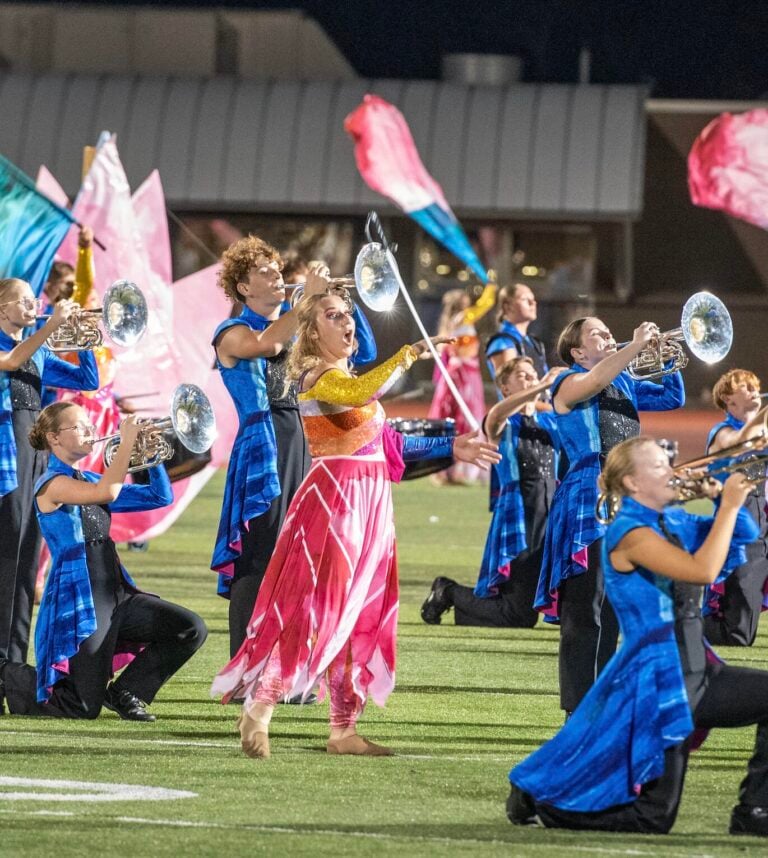
Fall has arrived once again, and with it the Kentucky Department of Travel and Tourism and the Kentucky Department of Parks are joining forces to help Kentuckians and visitors alike enjoy the colorful foliage and autumn events around Kentucky.
The 2015 edition of their program, called ColorFall, features a website – KentuckyTourism.com/Seasons – that provides a variety of information about this colorful time of year, including reports on leaf changes from naturalists at parks throughout the state. ColorFall’s Tree Coloration Guide gives viewers a guide to Kentucky trees and their “leaf peeping” color.
There are also listings of fall events and a spot to view and post your favorite Kentucky fall photos tagged #kycolorfall in Instagram. The program runs through Oct. 31.
Dean Henson, the park manager at Big Bone Lick State Historic Site and a former naturalist, says that many variables contribute to the degree of foliage color in any given fall season.
“The greater the frequency of crisp, sunny days with no evening frost, the more brilliant our colors,” said Henson. “For those seasons when the fickle mix of environmental factors is just right, waiting eyes are rewarded with a beaming display of color.”
Henson is also a popular contributor to ColorFall with his blog posts about the stages of fall color. His essay, “The Pageantry of Autumn,” is reprinted below.

The Pageantry of Autumn
By Dean Henson
Somewhere a tired, ragged, maple leaf tinged red-orange by the crispy-cool nights and brilliant sunny days of autumn teeters on its brittle stem one last time and is then released to make its solitary journey from high atop a shimmering tree to the awaiting forest floor. Having been produced and displayed as one among many, it will now join thousands of its kindred huddled around the base of the host tree like children clinging to their mother’s dress-tail. The leaves, having done all their living in bondage on the end of a twig, experience a few fleeting seconds of freedom and then become as so many curled brown memories of lazy summer days. It’s the death of summer.
What an elaborate change so many natural things experience in just over a month’s time. The shortened day-length combined with steeply dipping temperatures signal the natural world that a season of change has come. The seemingly endless, iron-fisted, green grip of the growing season is now loosened by the appearance of an occasional yellow leaf, the first gray hairs of late summer. The warmth of afternoon sun now seems tentative.
The shiny green leaf of June will fade, become emblazoned with color, and finally be sacrificed to nourish the tree that produced it. Soon the fiery colors of autumn’s palette adorn the landscape like a giant crazy-quilt.
The tremendous diversity of plant life in Kentucky, prompted by a combination of geography and geology, lends itself to outstanding displays of fall color. The shortened day-length of autumn triggers certain chemical changes in the broadleaf deciduous trees signaling the end of the growing season. With adequate soil moisture and plenty of cool, clear, brilliant sunny days with night temperatures hovering just above the freezing point, our trees will produce their most vibrant fall colors.

There are many variables at work in any given fall season. A significant lack of rainfall in the late summer or an early frost can cause the leaves to change from green to brown with little chance for showy colors in between. Conversely, a long rainy period in early fall can cause the leaves to receive nutrition right up until the time of the first frost, again causing the green-to-brown syndrome. In such cases, the leaves usually fall from the trees in a matter of days. However, for those seasons when the fickle mix of environmental factors is just right, our waiting eyes are rewarded with a beaming display of vivid colors.
With the slowing of physiological activity in the trees, the green pigments that have colored the leaves since spring will begin to fade. Gradually we are able to see the yellow pigments of carotenoids which had been masked. While yellow pigments lurked beneath the green all through the growing season, the reds and purples that make certain fall seasons particularly beautiful are not present throughout the summer. They’re created by pigments called anthocyanins that are only produced in the fall when cool, clear days with lots of sunshine prevail. The greater the frequency of crisp, sunny days with no evening frost, the more brilliant our colors. These timid factors produce only a handful of truly spectacular fall seasons in a lifetime.
Trees that are typically showy in their fall foliage are few. Yellow and gold are produced by sugar maple, yellow poplar, chestnut oak, beech, black cherry, and hickory. Red, purple, and orange are produced by red maple, scarlet oak, black gum, dogwood, persimmon, sourwood, sweetgum, sassafras and the sumacs.

Autumn, as spring, brings numerous modifications to the outdoors. The seasonal change of clothing for the natural world is noted by everyone. But, other less apparent changes are prompted, as well. Consider that snakes begin seeking winter hibernation areas, some woodland salamanders begin to court and mate in shallow woodland pools, deer and turkey begin to forage on the fallen mast of hardwood trees, fox and raccoon litter mates begin to disperse and seek lives of their own, and many birds will depart southward to winter in warmer climates.
As autumn wears on ospreys and wood ducks leave the state, eagles return to winter on west Kentucky lakes, and whitetail bucks size up one another and go into rut.
And somewhere out there, late in October, the last groundhog to wrap up his pre-season fat accumulation will take one last, lingering look at the meadow he calls home, then duck inside his burrow, to be seen no more until the rumbling of February daffodils awaken him from winter quietude.
What a special season the “fall of the year” turns out to be, for though the year is old, and the season carries a feeling of maturity, it seems to us the shortest season of all. Autumn reminds us with each stiff, chilling breeze that there is yet another change to come before the year has come full circle.
A visit to woods in October on a frosty morning reveals that the slightest stir of wind sends leaves spinning, twirling, and plummeting in every direction. Let those falling leaves speak to you of an enchanted season; a season in which the earth takes a respite from all her summer toils.

From Kentucky Department of Travel and Tourism





















